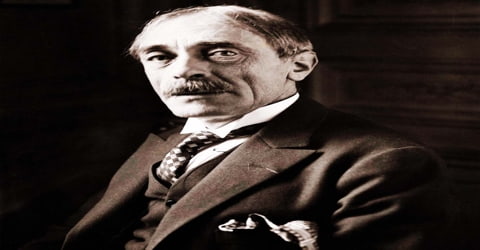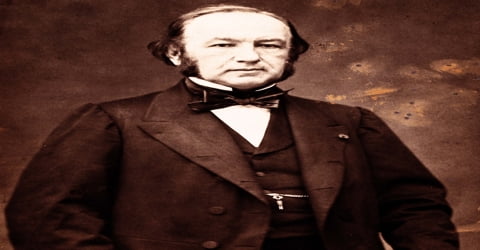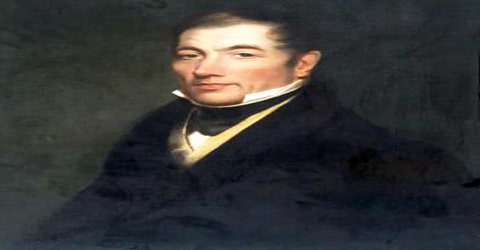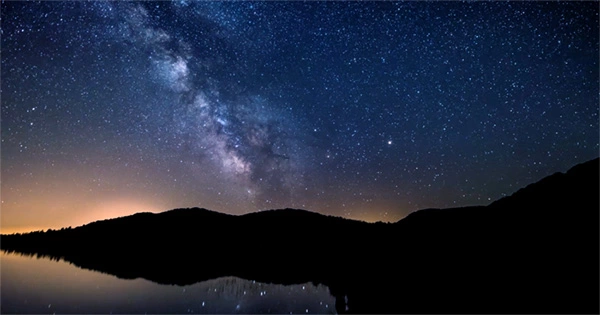Biography of Paul Valéry
Paul Valéry – French poet, essayist, and philosopher.
Name: Ambroise Paul Toussaint Jules Valéry
Date of Birth: October 30, 1871
Place of Birth: Sète, France
Date of Death: July 20, 1945 (age 73)
Place of Death: Paris, France
Occupation: Poet, Philosopher
Father: Barthélémy Valéry
Mother: Fanny Grassi
Spouse/Ex: Jeannie Gobillard (m. 1900-1945)
Children: Agathe Valéry, Claude Valéry, François Valéry
Early Life
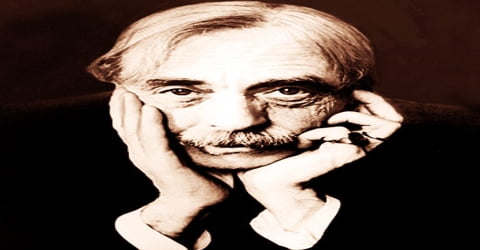
A French poet, essayist, and critic, Paul Valéry were born on October 30, 1871, to a Corsican father and Genoese-Istrian mother in Sète, a town on the Mediterranean coast of the Hérault, but he was raised in Montpellier, a larger urban center close by. His greatest poem is considered La Jeune Parque (1917; “The Young Fate”), which was followed by Album de vers anciens 1890-1900 (1920) and Charmes ou poèmes (1922), containing “Le Cimetière Marin” (“The Graveyard by the Sea”). In addition to his poetry and fiction (drama and dialogues), his interests included aphorisms on art, history, letters, music, and current events. Valéry was nominated for the Nobel Prize in Literature in 12 different years. Paul later wrote a large number of essays and occasional papers on literary topics and took a great interest in scientific discoveries and in political problems.
Paul showed great interest in numerous fields and is therefore often characterized as a polymath. He enrolled in the poetic school of the symbolism of 19th century and also served as its last representative. All his life, he used to write his observations on the creative process in his personal notebooks. Apart from poetry and fiction, his works also contained a large number of essays and aphorisms based on art, history, letters, music, and current events. Some of his most famous works are “La Jeune Parque.” “De Vers Anciens,” “Charmes Ou Poèmes” and “Le Cimetière Marin.” With these marvelous collections, Valery was remarked as an outstanding poet in France of that time. Upon establishing a name for him, Valery grabbed the position of an eminent public figure, writing several essays and taking a deep interest in political issues too.
Childhood, Family and Educational Life
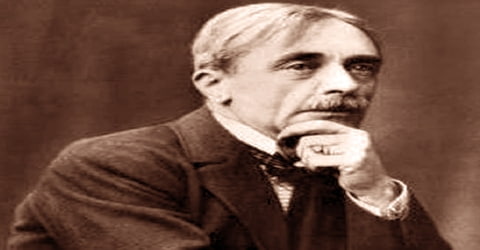
Paul Valéry, in full Ambroise-Paul-Toussaint-Jules Valéry, was born on October 30, 1871, in Sète, a town on the Mediterranean coast of the Hérault to a Corsican father and Genoese-Istrian mother. He was brought up in Montpellier which was a nearby urban center.
After a traditional Roman Catholic education, Paul studied law at university and then resided in Paris for most of the remainder of his life, where he was, for a while, part of the circle of Stéphane Mallarmé.
Paul was educated at Montpellier, where he studied law and cultivated his interest in poetry and architecture. He was a diffident youth, and his few friends at this time were Gustave Fourment, who became a professor of philosophy, and the writers Pierre Louÿs and André Gide. His early literary idols were Edgar Allan Poe, J.-K. Huysmans, and Stéphane Mallarmé, to whom he was introduced in 1891 and whose artistic circle he came to frequent regularly.
Personal Life
In 1900, Paul Valéry married Jeannie Gobillard, a friend of Stéphane Mallarmé’s family, who was also a niece of the painter Berthe Morisot. The wedding was a double ceremony in which the bride’s cousin, Morisot’s daughter, Julie Manet, married the painter Ernest Rouart. Valéry and Gobillard had three children: Claude, Agathe, and François.
Career and Works

Paul Valéry wrote many poems between 1888 and 1891, a few of which were published in magazines of the Symbolist movement and favorably reviewed, but artistic frustration and despair over an unrequited love affair prompted him in 1892 to renounce all emotional preoccupations and to dedicate himself to the “Idol of the Intellect.” He disposed of most of his books, and from 1894 until the end of his life he would rise at dawn each day, meditate for several hours on scientific method, consciousness, and the nature of language, and record his thoughts and aphorisms in his notebooks, which were later to be published as the famous Cahiers. Valéry’s new-found ideals were Leonardo da Vinci (“Introduction à la méthode de Léonard de Vinci” – 1895), his paradigm of the Universal Man, and his own creation, “Monsieur Teste” (Mr. Head), an almost disembodied intellect who knows but two values, the possible and the impossible (“La Soirée avec Monsieur Teste” – 1896).
Paul did not even take writing as his full-time career until 1920. He pursued the same after Edouard Lebey, a former chief executive of the Havas news agency passed away suffering from Parkinson’s disease for whom he used to work as a private secretary. Therefore till this time, he earned his livelihood at the Ministry of War prior to accepting a comparably-flexible post of an assistant to the increasingly-impaired Lebey. Paul served this job for a long twenty years.
Pressed by Gide in 1912 to revise some of his early writings for publication, Paul Valéry began work on what was intended to be a valedictory poem to the collection La Jeune Parque, centred on the awakening of consciousness in the youngest of the three ancient “Parques,” or “Fates,” which traditionally symbolized the three stages of human life. Paul became so engrossed in the technical problems it presented that he took five years to complete the long symbolic work. When finally published in 1917, it brought him immediate fame. His reputation as the most outstanding French poet of his time was quickly consolidated with Album de vers anciens, 1890-1900 and Charmes ou poèmes, a collection that includes his famous meditation on death in the cemetery at Sète (where he now lies buried).
Paul Valéry served as a juror with Florence Meyer Blumenthal in awarding the Prix Blumenthal, a grant given between 1919 and 1954 to young French painters, sculptors, decorators, engravers, writers, and musicians. Valéry wrote no more poetry of consequence after 1922, but his place as a major writer was secure.
In 1925, after Paul got selected to the Académie française, Valery turned into an active public speaker. He journeyed Europe and gave various lectures on the cultural and social problems. Additionally, he took up several official posts eagerly proposed to him by an admiring French nation. Paul also represented his nation on many cultural issues at the League of Nations and participated in numerous of its committees. He established the Collège International de Cannes, which was a private institution with subjects like French language and civilization in 1931. The college is running successfully even today and offers many professional courses for both native speakers and for foreign students.

Paul gave the keynote address at the 1932 German national celebration of the 100th anniversary of the death of Johann Wolfgang Goethe. This was a fitting choice, as Paul Valéry shared Goethe’s fascination with science (specifically, biology and optics). In addition to his activities as a member of the Académie française, he was also a member of the Academy of Sciences of Lisbon, and of the Front national des Ecrivains. In 1937, he was appointed the chief executive of what later became the University of Nice. He was the inaugural holder of the Chair of Poetics at the Collège de France.
Paul Valéry’s most idiosyncratic works are all variations on the theme of the tension within the human consciousness between the desire for contemplation and the will to action: in “Introduction à la méthode de Léonard de Vinci” and repeatedly in his notebooks, he contrasts the infinite potentialities of mind with the inevitable imperfections of action; in La Jeune Parque, he shows a young Fate by the sea at dawn, uncertain whether to remain a serene immortal or to choose the pains and pleasures of human life; in “Le Cimetière Marin” he broods by the sea at noon on Being and Not-Being, on the living and the dead; his many letters regularly complain of the conflict in his own life between the dictates of public life and his desire for solitude.
While World War II was going on, the “Vichy regime” bared him of many of these jobs and distinctions as Paul Valéry quietly denied working with Vichy and the German occupation, but Paul did not stop, all through these distressed years, to publish and continued to be an agile participant in the cultural life of France, specifically as the member of the Académie française.
Paul Valéry was greatly interested in the state of modern physics and mathematics, and through extensive reading and, often, personal acquaintances he became well versed in the work of such scientists and mathematicians as Maurice, Duc de Broglie, Bernhard Riemann, Michael Faraday, Albert Einstein, and James Clerk Maxwell. He made lecture tours all over Europe and delivered speeches on a number of national occasions. He was elected to the Académie Française in 1925, was made an administrative head of the Centre Universitaire Méditerranéen at Nice in 1933, and became a professor of poetry, a chair created especially for him, at the Collège de France in 1937. On his death, he was given a full state funeral.

Paul Valéry’s technique is quite orthodox in its essentials. His verse rhymes and scans in conventional ways, and it has much in common with the work of Mallarmé. His poem, Palme, inspired James Merrill’s celebrated 1974 poem Lost in Translation, and his cerebral lyricism also influenced the American poet, Edgar Bowers. Paul is best known as a poet, and he is sometimes considered to be the last of the French symbolists. However, he published fewer than a hundred poems, and none of them drew much attention.
Death and Legacy
Paul Valéry died in Paris in 1945. He is buried in the cemetery of his native town, Sète, the same cemetery celebrated in his famous poem Le Cimetière Marin.
Though Paul made much of his preoccupation with intellectual problems and incurred the particular displeasure of the Surrealists for his scathing attacks on poetic inspiration, there is ample evidence in Valéry’s work that he remained all his life keenly responsive to the pleasures of the senses: the voluptuousness of his female nude studies (“Luxurieuse au bain,” “La Dormeuse,” and the picture of Eve in “Ébauche d’un serpent”), the warmth with which he writes of the lovers’ embrace (“Le Cimetière Marin,” “Fragments du Narcisse,” “La Fausse Morte”) or of the sun, sky, and sea, which he had loved since his Mediterranean childhood all show that he must not be too closely identified with his arid Monsieur Teste. The distinctive feature of his prose and poetry, even when he is dealing with the most abstract of subjects, is sensuousness; his prose is aphoristic and graceful, his poetry rich in natural images and allusions, always classical in form, and, at its best, as sinewy, subtly rhythmical, and melodious as the very best verse of the great dramatist Jean Racine or the Symbolist poet Paul Verlaine.
Oscar-winning Japanese director Hayao Miyazaki’s 2013 film The Wind Rises and the Japanese novel of the same name (on which the film was partially based) take their title from Valéry’s verse “Le vent se lève… il faut tenter de Vivre !” (“The wind rises… We must try to live!”) in the poem “Le Cimetière Marin” (The Graveyard by the Sea). The same quote is used in the closing sentences of Anthony Burgess’s 1962 novel The Wanting Seed.
Information Source:
